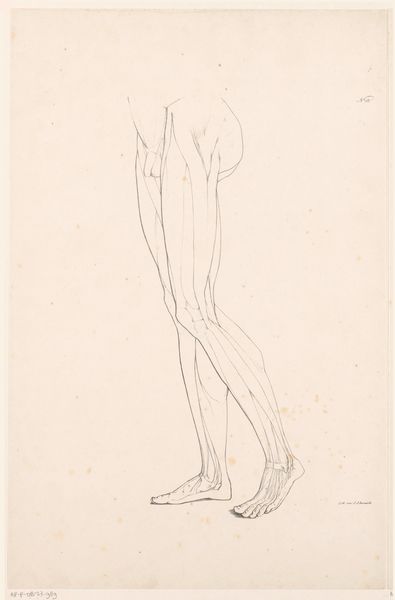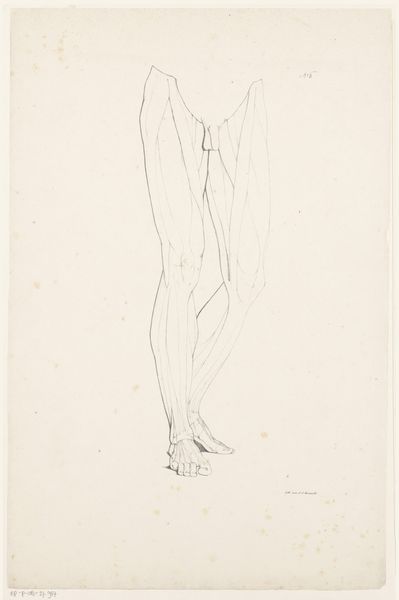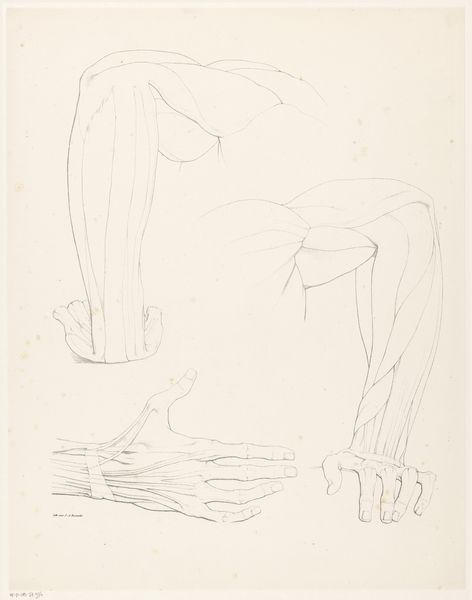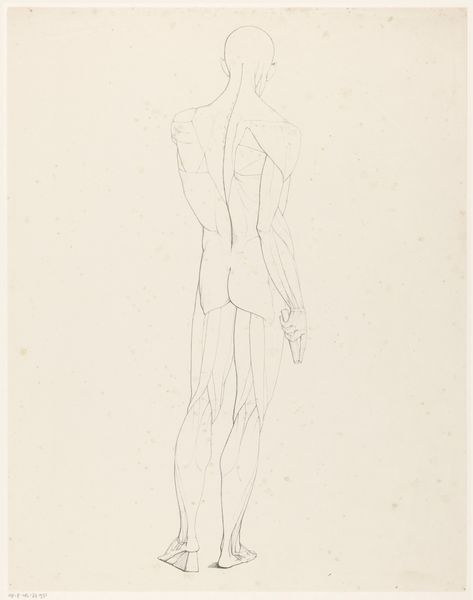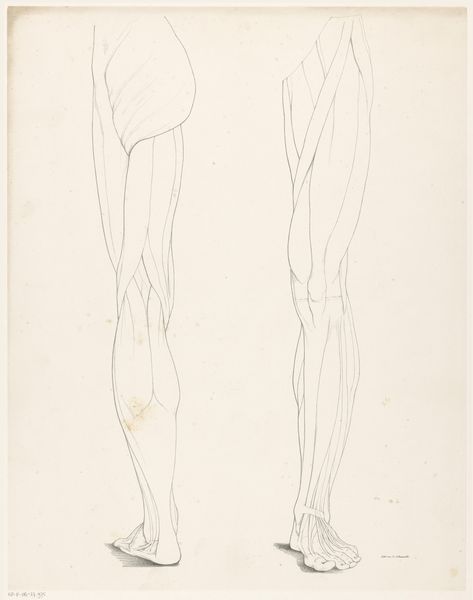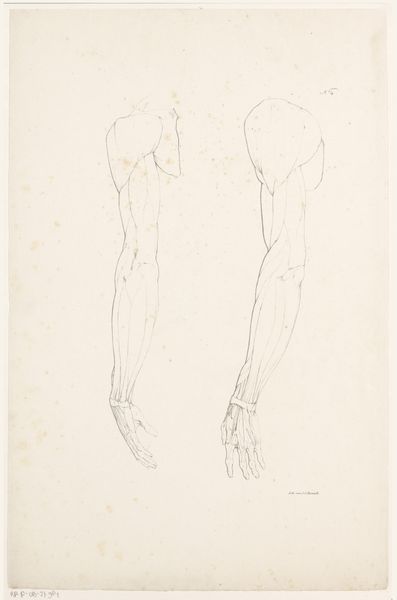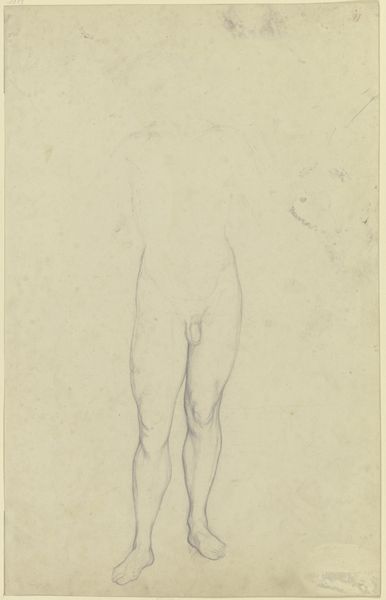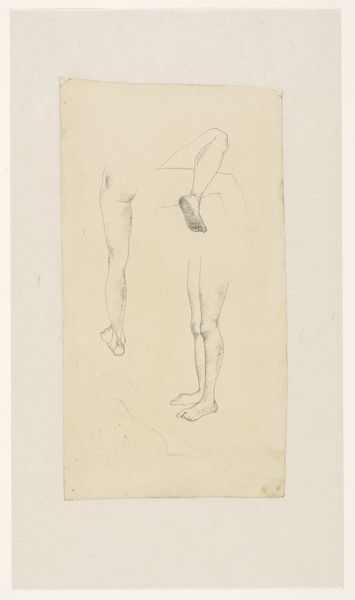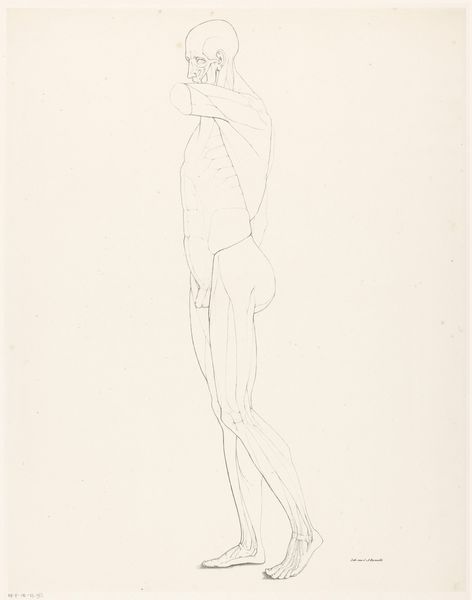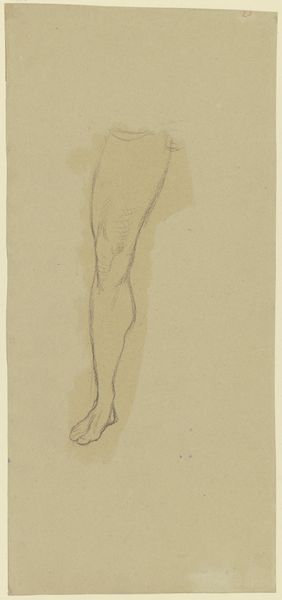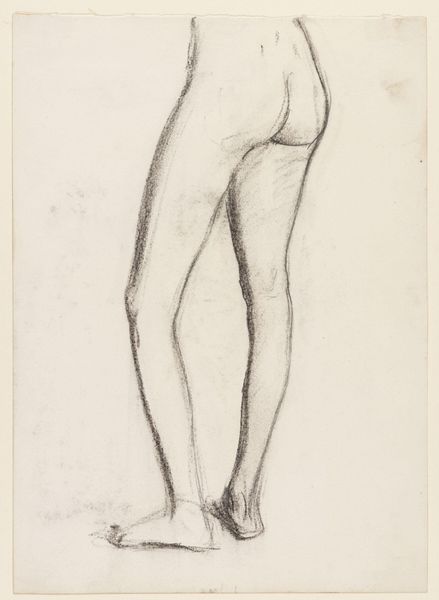
drawing, pencil
#
portrait
#
drawing
#
pencil sketch
#
classical-realism
#
figuration
#
pencil
#
academic-art
Dimensions: height 427 mm, width 275 mm
Copyright: Rijks Museum: Open Domain
Editor: Here we have Jean Augustin Daiwaille’s pencil drawing, “Benen met spierbundels,” from sometime between 1820 and 1833. It's an academic study of legs, focusing intently on the musculature. I’m struck by how clinical yet powerful the rendering is. What stands out to you in this drawing? Curator: Well, for me, this piece speaks volumes about the changing landscape of art production in the 19th century. Academic art like this wasn't just about aesthetics; it was about a system, a factory of artistic production. Daiwaille’s use of pencil, a readily available and relatively inexpensive material, points to the democratization of art education, doesn't it? Editor: That's fascinating. So, the very material signifies a shift in access and maybe a less rigid hierarchy of art forms? Curator: Precisely! Pencil allowed for wider participation, less reliance on expensive materials controlled by guilds and academies. But think about the labor involved. Drawing like this was crucial for aspiring artists, repetitive practice to internalize anatomical knowledge. What kind of socio-economic class do you imagine could access such training? Editor: Right, I see the layers now. It’s not just a simple drawing of muscles, but it also hints at the social structures that enable—or limit—artistic creation. How the materials and the labor interact. Curator: Absolutely. The 'product' – the finished drawing – becomes secondary to the understanding of the *means* of its production and circulation. We must challenge the canon, question why these drawings become 'art' in museums versus similar, perhaps, less expertly rendered drawings that might have disappeared completely. Think about its function, the role this study played in creating artworks. Editor: That’s a great point! Thinking about where these studies fit in the art-making process really broadens how we value and understand the piece itself. It is definitely about labor, class, and consumption. Thanks for a totally different way of understanding what I was looking at! Curator: It's been enlightening for me too. Thanks for pointing out details I didn't originally observe.
Comments
No comments
Be the first to comment and join the conversation on the ultimate creative platform.
